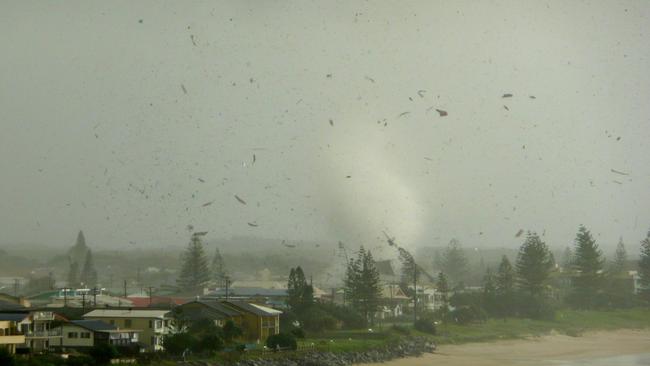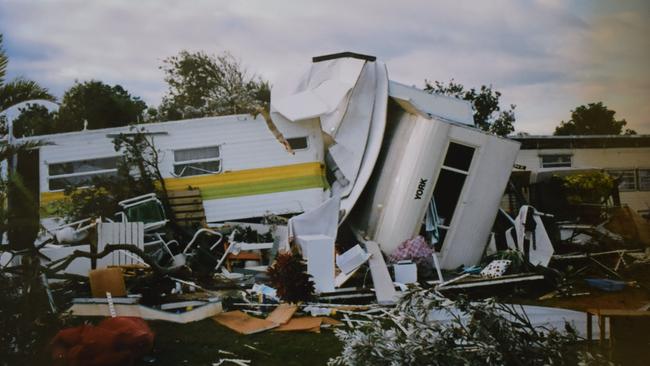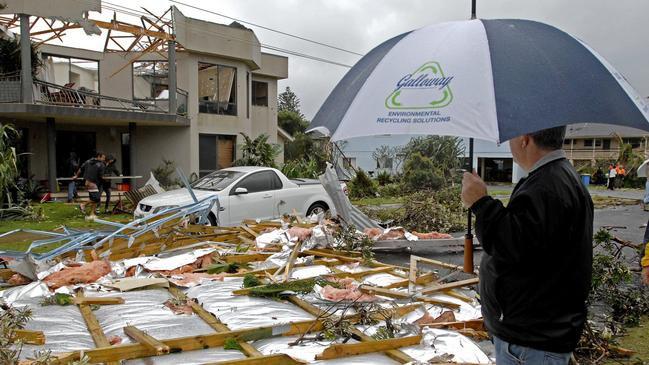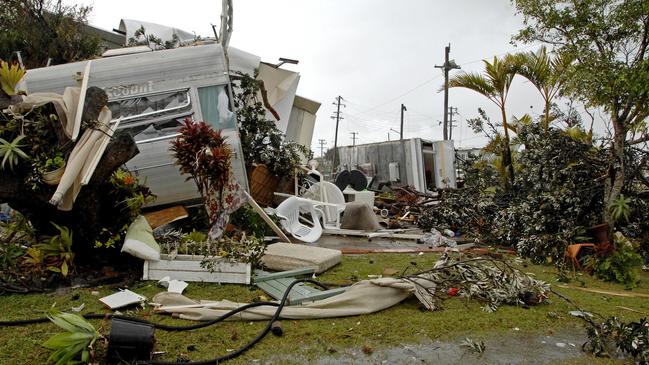Lennox Head tornado: 15 years since shock weather event hit northern NSW enclave
A Gold Coast doctor spoke of the “carnage” he witnessed as a tornado touched down in a seaside enclave, smashing properties and injuring locals. SEE THE PICTURES
Weather
Don't miss out on the headlines from Weather. Followed categories will be added to My News.
Central and northern NSW has copped a lot in recent weeks after torrential downpours led to horrific and fatal flooding.
It’s the latest hit to the east coast of Australia after the Gold Coast felt the impact of Tropical Cyclone Alfred in March.
It comes 15 years after the northern NSW enclave of Lennox Head was smashed by a freak weather event.
Just after 7.30am on Thursday, June 3, 2010, a tornado ravages the seaside town of Lennox Head, south of the Gold Coast.

The giant waterspout formed in the Pacific Ocean off the coastline. It crossed the beach at speeds of up to 270km/h generating a noise compared to a jumbo jet and carved a 300m-wide track through the township.
In 20 seconds it demolished 12 homes and damaged another 30.
Six people were injured but, miraculously, nobody was killed.
The tornado hit the town, darkening the sky as trees were uprooted, roofs were ripped off buildings, houses were torn up and caravans flipped over.
Residents told of running for their lives and battening down in bathrooms to wait for it to pass.

“Before I knew it, trees were being uprooted, bricks tossed around and flung into fences, and houses were going up into the air – it was carnage,’’ said Gold Coast doctor Rob Brown who was on holiday with his wife Mayata and son Mahdi
``I raced the family inside because by that stage we were frightened and worried for our safety and it’s quite a miracle nobody was more seriously injured or killed.’’
Among those who witnessed it was Lennox local Marcus Aboodi.
“I looked out my window and saw basically houses and stuff being twisted up into the air,” he said.

Ballina Shire Mayor Phillip Silver appealed to the NSW Government to declare the town a natural disaster area.
Then-NSW Premier Kristina Keneally flew in for a first-hand assessment of the damage.
Locally based company East Coast Roofing had up to 10 men out and about trying to patch the hundreds of damaged homes.
‘‘I reckon about 200 roofs have been damaged,’’ said owner Martin Bailey.
‘‘We’ve been helping with tarps, replacing tiles.
‘‘Some blokes came in wanting to cash in. We will get some money back from insurance but we’re doing this as volunteers. I had to make sure people were safe, particularly the elderly.’’

‘‘It’s part of living in the town.’’
But amid the destruction, there were strong showings of community spirit.
Then-Year 12 student Leticia Chapman was interviewed by the Bulletin as she baked muffins for police and volunteers after watching them work all day in the rain.
‘‘I did a fundraiser for the floods last year – I just wanted to do something to help,’’ the then-17-year-old said.

A local bakery gave pies to hungry residents who flocked to the bowls and sports club for dinner while power was cut, while accommodation houses provided free beds for people left without homes.
Ultimately, the damage bill topped $20m, as Ms Keneally and the federal government both pledged to help.
The Rudd Government offered concessional loans for community groups, small businesses and primary producers.
Ms Keneally declared the area a natural disaster zone which allow for rapid rebuilding.
The tornado lasted just 10 minutes in total but it left behind a shocking amount of damage and long memories which linger in locals even today.





